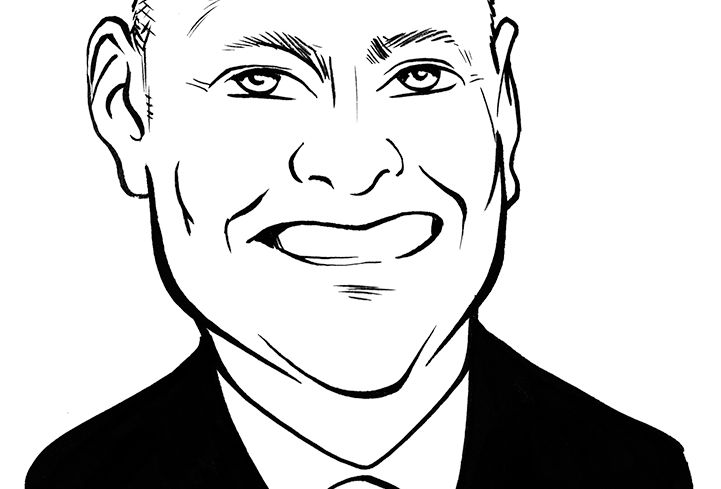Touring: The Ultimate Design Aid
Forget digital photos, or 360-degree video walk-through. Clients want to touch a space before investing.
By Scott Spector November 3, 2017 12:23 pm
reprints
Ever seen a print of a painting then the actual piece of art? Sure, you have. Even if the copy was of a high quality, I’m betting that standing in front of the piece of fine art filled your senses in a way that looking at a flat reproduction of it couldn’t.
The same would be true of a seeing a photograph of a building versus stepping alongside the real thing.
Today, clients in need of effective interior work spaces have taken that sensibility to heart. Never mind those print or digital photos of potential workspaces, or that 360-degree video walk-through. Despite all the promises of the virtual reality tour—or whatever else is on offer—clients want to experience what a space is like before investing in it. And I’m not talking about only “white boxes,” where a client imagines what the spaces will look and feel like when they’re furnished and buzzing with activity.
Embracing the trend of activity-based planning
While activity-based planning isn’t new, the idea of combining it with tours of active spaces in anticipation of a newly designed office is a more recent development. These tours look at facilities already designed around comparable parameters and show a sense of movement throughout the venue, plus the sights, sounds and other environmental factors within it, giving clients the ability to more clearly imagine how their companies might or might not work in a similar space. Our current meetings with new clients center around these kinds of tours, regardless of the business’ sector. Even traditional clients are moving away from standard design boards toward heightened visuals and inspiration from places like Pinterest, Uber and LinkedIn.
Feeling what’s real versus experiencing virtual reality
And why wouldn’t clients want to see an office in-action before going with a similar design for theirs? At best, pictures offer a pictorial description of the sentiment expressed in an environment. Even videos provide only a simulated representation of what a physical space is like. To fully appreciate an interior (or exterior), it must be experienced.
When a person walks into a building or room, the scale of the space becomes immediately evident. Standing in an interior that has 11-foot ceilings, after all, feels nothing like reading about those metrics on a planning document. Of course, a room’s scale isn’t the only thing that becomes clear when standing or walking through a space. So do its acoustics, light, overall circulation and the rest of its environmental features.
Recently, an owner’s representative suggested that we give our office design demonstration in a raw space that a client was contemplating to lease. We did, presenting our mock-up in the empty office, giving the client a semi-virtual perspective of what we’d planned, including allowing them to directly experience the space’s daylight, ceiling height and physical condition. By mixing reality with virtual reality, the client could feel the space and see it by example, giving them a more comprehensive view of what it would be like, once it was completed.
As it stands, we conduct multiple visits of existing spaces per project during the design process. What may be unusual is that the offices being toured aren’t necessarily involved in the same type of business as the client who’s viewing them. Seeing how another business operates within its space can give a client a new perspective on how to conduct certain aspects of its business, too, whether that involves a previously unconsidered layout, type of office furnishing etc.
Confirming anticipated wants and needs
More than viewing an unoccupied space allows, touring a fully furnished environment permits clients to understand not only the kind of furniture and layouts used but also its finish choices, thereby confirming or countering all the preconceived ideas. Even details like the sensory effect of wood, stone or concrete finishes throughout a space, become part of the site tour’s workplace visioning.
Many people no longer spend their days sitting at a desk. They’re up and about, working in collaboration with teammates, taking confidential client calls, video conferencing and otherwise conducting business, necessitating flexible work areas and conference spaces. Effective design isn’t only a matter of weeding out a favorite architect. Touring sites to key in on effective office design can go a long way in helping clients fully understand what it will take to maximize a location’s 10- to 15-year lease. There’s no substitute for the physical experience felt when touring a space, especially an active one. Skip the PowerPoint. Give your clients a true sense of what’s possible. Take them on a tour—or two.
sespector@spectorgroup.com


